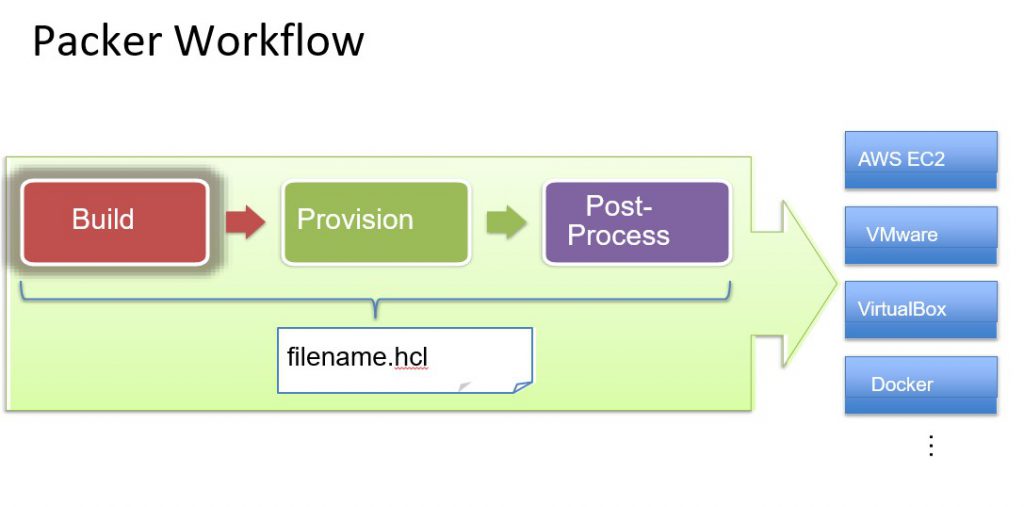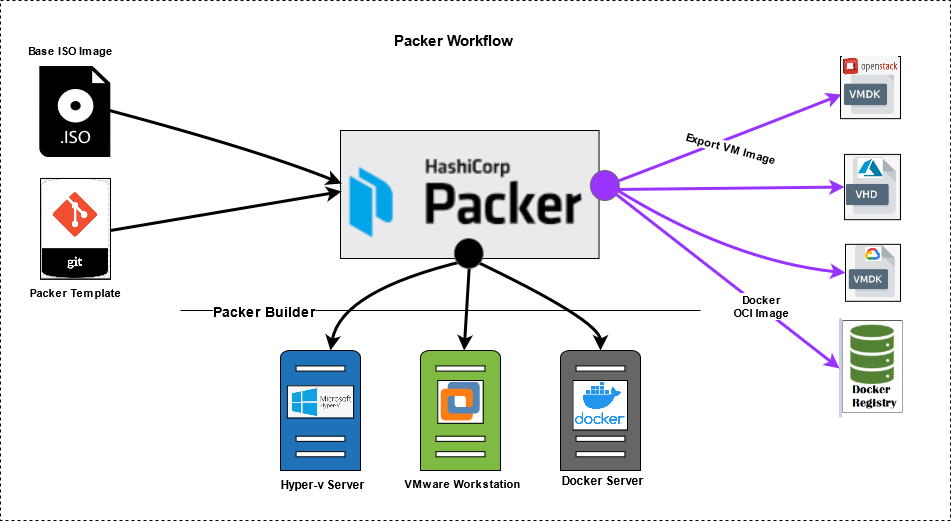
The workflow for using HashiCorp Packer typically involves the following steps:
- Create a Packer template: A Packer template is a JSON file that defines the configuration for building a machine image. The template specifies the builders, provisioners, and post-processors to use, as well as the configuration options for each.
- Run
packer build: Use thepacker buildcommand to execute the Packer template and create the machine image. During the build process, Packer will run the builders to create a new virtual machine, use the provisioners to configure the virtual machine, and then create the machine image in the specified format. - Test the machine image: Once the machine image has been created, it can be tested to ensure that it is functioning correctly. This may involve running automated tests or manually verifying that the image is working as expected.
- Distribute the machine image: The machine image can be distributed to various cloud providers, virtualization platforms, or container systems. This may involve uploading the image to a cloud storage service, such as Amazon S3 or Google Cloud Storage, or creating a custom image in a virtualization platform like VMware or VirtualBox.
- Update the Packer template: If changes need to be made to the machine image, such as adding new software or updating configurations, the Packer template can be updated and the
packer buildcommand can be run again to create a new image.


I’m a DevOps/SRE/DevSecOps/Cloud Expert passionate about sharing knowledge and experiences. I am working at Cotocus. I blog tech insights at DevOps School, travel stories at Holiday Landmark, stock market tips at Stocks Mantra, health and fitness guidance at My Medic Plus, product reviews at I reviewed , and SEO strategies at Wizbrand.
Please find my social handles as below;
Rajesh Kumar Personal Website
Rajesh Kumar at YOUTUBE
Rajesh Kumar at INSTAGRAM
Rajesh Kumar at X
Rajesh Kumar at FACEBOOK
Rajesh Kumar at LINKEDIN
Rajesh Kumar at PINTEREST
Rajesh Kumar at QUORA
Rajesh Kumar at WIZBRAND

 Starting: 1st of Every Month
Starting: 1st of Every Month  +91 8409492687
+91 8409492687  Contact@DevOpsSchool.com
Contact@DevOpsSchool.com
